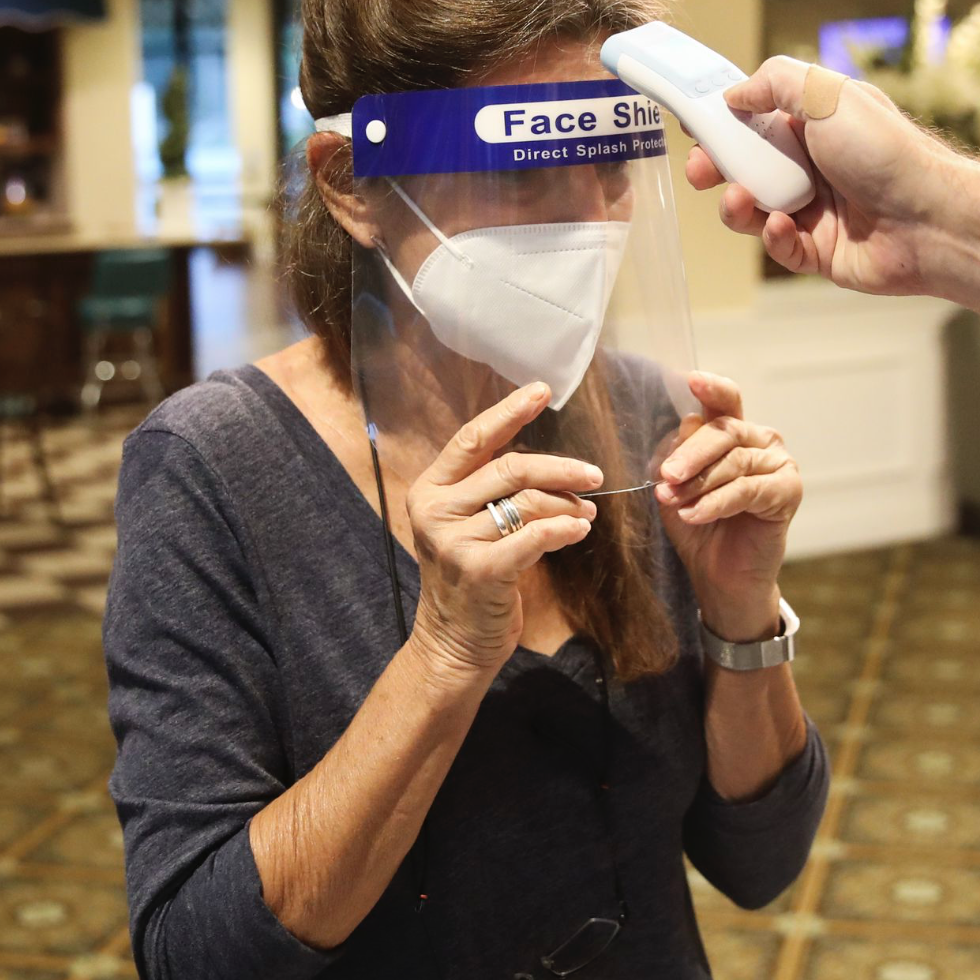By Wednesday afternoon, Becky Terrell was tired of calling her dad’s nursing home. Her 93-year-old father lives in a facility in Hudson that wouldn’t allow her and her sister to visit him in his room.
Terrell simply wanted to hug her dad for the first time in months.
On Sept. 1, Gov. Ron DeSantis allowed long-term care facilities to reopen to controlled visitation after a months-long closure to limit the spread of the coronavirus. The state created two categories of visitors — general and caregivers. The former must stay 6 feet from residents and visit alongside others in a community room. The latter can have private visits and touch their loved ones, but their status must be approved by facilities.
“My nursing home says Family members can NEVER be Compassionate Caregivers or Essential Caregivers, as those are paid positions only,” Terrell wrote on a Facebook page called Compassionate Caregivers. “So we are on the general visitation list — 2 visits a week for 15 minutes — 6 feet apart — hall monitor and a timer. My Father is blind and extremely hard of hearing so it was cruel to even try.”
The New Port Richey woman asked others for help in becoming an essential caregiver at Bear Creek Nursing Center. And she filed a complaint with the state Agency for Health Care Administration.
“We’re not aware of any family members of our residents that have been denied access as an essential caregiver,” Bear Creek administrator Maria Owens-Wicker wrote Friday in an emai to the Tampa Bay Times, adding that they have followed the state’s instructions for reopening.
Elder advocates say they’re hearing from plenty of family members like Terrell, who are confused about the new visitation rules or concerned about the way facilities are applying them. Many also worry that days after reopening to visitors, the state stopped requiring regular coronavirus testing of staff members at assisted-living facilities, although federal guidelines still require staff testing at nursing homes. Some think the state also should test visitors before they enter homes.
Mary Daniel started Caregivers for Compromise. The Jacksonville woman drew national attention for becoming a dishwasher at her husband’s care facility so she could visit him. Daniel posts videos explaining the rules and shares a copy of the state’s “visitation expectations” for families to print out and hand to nursing homes. Family members say she’s filling in gaps the state has left.
Some homes have reopened, but others will need more time to develop procedures, procure masks and hire enough staff to support visitation, said Kristen Knapp, spokesperson for the Florida Health Care Organization, a trade group representing long-term care facilities. In addition, she pointed out, facilities cannot have had a new COVID-19 case for the previous 14 days before opening up for general visitation; caregiver visitation faces no such requirement.
“You can’t just open the doors," Knapp said.
The roll-out of visitation policies has been confusing, said state Sen. Lauren Book, D-Plantation, chairwoman of the Senate Children, Families and Elder Affairs Committee. Her office has received lots of calls from constituents asking how they can get in to see their loved ones.
“It is hard to navigate," she said. "There’s so much pain, so much anguish, people that are afraid, and it’s a really terrible, terrible thing.”
She’s also concerned about the state relaxing the testing requirements.
“Why would we be doing that?” Book asked. “We need to ensure that things aren’t getting too loosey-goosey on a population that is so vulnerable.’”
Book sent a letter to the state on Thursday, asking that it reinstate testing in assisted-living facilities.
Brian Lee called the reopening of visitation a “sloppy mess.” He is director of Families for Better Care, an advocacy group for long-term care facility residents. His office has been fielding calls from confused families.
The process also has been difficult for care facilities, Lee said, which may have thought they had more discretion about who enters their facilities.
“But when you read the executive order ... there wasn’t a lot of wiggle room," he said. “And I think that may have caught the providers off guard, because the families are grabbing onto this executive order.”


